
Project title: Magnetically Actuated Artificial Cilia
Scientist in charge: Fernando BENITO-LOPEZ
Institute: University of the Basque Country
Smart materials can provide new ways of fluid control and manipulation when integrated in microfluidic devices. In particular, artificial cilia, when fabricated in the walls of microfluidic devices, can be used, as versatile tools for the movement of liquid on confined spaces [1]. Here, the surface of microfluidic channels as well as flat surfaces will be patterned with artificial cilia.
Different fabrication techniques will be evaluated: use of PDMS with integrated magnetic nanoparticles for cilia fabrication and photopatterning of ionogels and polymers with magnetic and/or photoactive properties at flat surfaces. Investigations will be carried out to grow the cilia from the surface, and to actuate them with light or magnetic forces. The generated structures will be pillars of width ranging from 100 μm down to 2 μm.
The fabrication of microfluidic devices will be carried out in order to better accommodate the cilia and to study relevant fluidic properties such as mixing and surface roughness [2]. The performance of the microfluidic devices for free transport through cilia actuation will be investigated.
1 Czugala et al. (2014) Sensors Actuators B Chem., 194, 105
2 Saez, Basabe-Desmonts and Benito-Lopez (2016) Microfluid. Nanofluidics, 20, 1
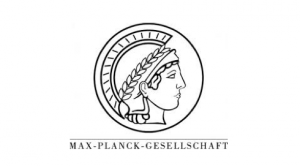
Project title: Generation of functional ciliated surfaces and application to biofouling-resistant micro
Scientist in charge: Eberhart BODENSCHATZ
Institution: Max-Planck Institute for Dynamics and Self-Organization
In nature, many vital processes involve flows driven by cilia or flagella, from removal of pollutants in the trachea to the movement of microscopic organisms in viscous fluid environments. In this project synthetic cilia will be created to structurally cover surfaces to facilitate surface driven fluid transport. This requires coordinated, directional beating of the cilia. We plan to investigate and build two types of cilia – magnetically driven cilia and ATP driven bottom up assembled bio-based cilia. These two approaches combined with will allow to have alternative technologies for surface driven transport. We will test the system by using such flows for clearing pathogens (bacteria and mucus-like substances) out of the channel, thus preventing fouling of microfluidic devices.
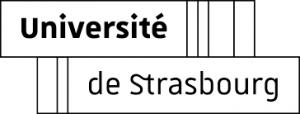
Project title: Actuated Liquid Cilia to achieve locally driven flow
Scientist in charge: Thomas HERMANS
Institution: Université de Strasbourg
Ferrofluids are fascinating magnetic fluids that are used in high demanding vacuum applications, and everyday objects such as loudspeakers. When a strong magnet is held close to such a ferrofluid, Rosensweig instabilities are induced, resulting in stunning hedgehog-like patterns. We propose to manipulate these instabilities with oscillating magnetic fields to induce local flows, much like natural cilia. The latter consist of extended tube-like structures that beat rhythmically to displace fluids, for example inside the brain. By optimizing the density and surface tension of the ferrofluid versus that of the fluid to be moved, we can influence the critical field where Rosensweig instabilities appear, as well as their wavelength. Our devices have only liquid-liquid interfaces, with expected low fouling properties. Achieving both locally-driven flow and non-fouling would create exiting new possibilities in microfluidics.
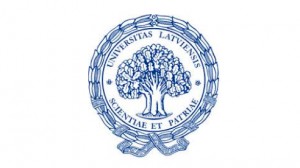
Project title: Imaging locally driven flows
Scientist in charge: Andrejs CEBERS
Institution: University of Latvia
Flexible magnetic filaments self-propel under the action of AC magnetic fields. They have many possible applications in microfluidics [1], for example, as mixers. Efficiency of their action is determined by the flow of the surrounding fluid. Our goal is to measure flow fields around magnetic filaments driven by different magnetic-field configurations using a micro Partice Image Velocimetry system that is available in our lab. Our previous experience is connected with the registration of the micro-flows around fingers initiated by magnetic micro-convection [2]. These measurements will be linked to corresponding numerical simulations of the flow fields around magnetic swimmers and will help to formulate the requirements for efficient self-propulsion of magnetic filaments and mixing, and build the knowledge base for developing applications based on controlled micro-object motility or induced flows in microfluidic conditions.
1 Cebers and Erglis (2016) Adv. Funct. Mater., 26, 3783
2 Erglis et al. (2013) J. Fluid Mech., 714, 612


Project title: From nano to macro-scales: identifying hidden properties of liquids
Scientist in charge: Laurence NOIREZ
Institution: Laboratoire Léon Brillouin (CEA-CNRS), Université Paris-Saclay
Extremely spread on the Earth, fundamental in the chain of life, the liquid state is however the least understood. Because the puzzling liquid properties are the more visible at the microfluidic scale, microfluidics does also open the route to identify the underneath mechanisms.
At the Laboratoire Léon Brillouin, we have developed an experimental protocol to make possible to access a property so far neglected at the microfluidic scale: the “static” shear elasticity [1]. This discovery indicates that liquid molecules might be long range correlated and makes possible the identification of new effects such as cooling under flow.
New improved micro-rheological, interfacial techniques and Large Facilities Instruments will be used in the frame of the PhD thesis “Solid-like Correlations in Liquids and Role of Interfacial Interactions” to identify the liquid/solid boundary parameters and characterize these new liquid properties from molecular up to macroscopic scales.
2D neutron diffraction Exclusive license agreement
1 Noirez and Baroni (2012) J. of Phys: Cond. Mat., 24, 372101

Project title: Computational (magneto-) hydrodynamic modelling
Scientist in charge: Andrejs CEBERS
Institution: University of Latvia
Strong magnetic properties of colloidal solutions of magnetic nanoparticles allow to observe different figures of equilibrium due to the balance of ponderomotive forces of self-magnetic field of droplets and capillary forces [1]. For example, sequence of equilibrium shapes in a high-frequency rotating magnetic field is determined by a set of bifurcations oblate-prolate-oblate-star fish. Numerical calculation of these shapes and their comparison with experimental findings give Important information about physical properties of magnetic droplets. At present the numerical algorithm based on boundary integral equations is elaborated which allows to calculate the figures of equilibrium of droplets and their bifurcations in a high frequency rotating field. We propose further development of the algorithm in order to account for the viscosity difference of magnetic fluid and surrounding fluid. This will allow to study in detail dynamics of magnetic droplets in a wide variety of external conditions, which so far is not well understood. This includes, besides the dynamics of magnetic droplets in all frequency range of a rotating field, for example behavior of magnetic droplets in a shear flow, formation of spike instability of magnetic fluid interface and other phenomena.
1 Erdmanis et al. (2017) Journ. Fluid Mech., 821, 266
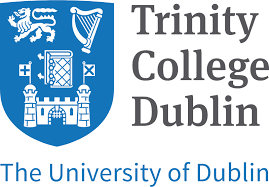
Project title: Structure and magnetism of concentrated ionic solutions
Scientist in charge: Michael COEY
Institution: Trinity College Dublin
Diffusion in liquids is usually treated in the dilute limit in terms of uncorrelated random thermal motion of dissolved ions, directed by a concentration gradient. The concentration limit, where motions of ions are highly-correlated, is much more interesting, and the distinction between diffusion and advection is blurred. It appears that ions in concentrated solutions move in highly-correlated groups of 105 -105 [1]. The response of concentrated aqueous solutions of paramagnetic ions to a magnetic field gradient will provide important insight into these correlations; a drop of paramagnetic solution in water can be easily manipulated by a magnet, although the magnetic field gradient forces on single isolated ions are orders of magnitude less than the entropic force driving their diffusion. The dynamic structure and correlations in ionic solutions, and the resulting magnetophoresis will be investigated by studies of 3d and 4f ions, coupled with synchrotron studies of dynamic structural correlation, and small-angle neutron scattering (LLB), complemented by molecular dynamics simulations (MPG). Results will be i) a proof of concept of magnetic separation of rare earth ions in solution using magnetic field gradients and ii) design of novel magnetic antitubes [2], filaments of pure water confined by a surrounding paramagnetic solution in a nonuniform magnetic field.
1 Gorobets, Gorobets and Rospotniuk (2015) J. Appl. Phys., 118, 73902
2 Coey et al. (2009) Proc. Natl. Acad. Sci., 106, 8811


Project title: Behaviour of Liquids Under Extreme Magnetic Field Gradient
Scientist in charge: Bernard DOUDIN
Institution: CNRS / IPCMS
Decreasing the system size makes the magnetic force field density increase. Nano-patterned magnetic structures therefore make it possible to achieve or exceed the highest reported magnetic forces in literature, and can be imposed at the atomic scale of solid-liquid interfaces [1]. Our motivation is to see how extreme magnetic forces at the nanoscale can impact fluid properties and local chemical reactions. Fundamentals of water-based solutes will be investigated under the extreme magnetic-force stress conditions, which arise at the apex of nanoscale magnetic structures, like magnetic cilia, the apex of patterned magnetic media, or magnetic nanoparticles. We propose to investigate the structural behaviour of water solutions near planar patterned media producing high magnetic gradients, as well as to use a chemical redox probe to investigate how chemical reactions can be impacted at these interfaces. We will take advantage of our experience in electrochemistry, with in-situ measurements of the local conductivity of these systems. In the last stage, we will test the behaviour under external applied magnetic fields, capable of switching the applied force field.
1 Popa et al. (2014) Proc. Natl. Acad. Sci. U. S. A., 111, 10433

Project title: Innovative development and manufacturing of magnet assemblies
Scientists in charge: Nataša Kovačević & David Jezeršek
Institution: Kolektor Group d.o.o.
Although NdFeB magnets have excellent magnetic properties, such as the highest energy product values (> 500 kJ m-3), their corrosion resistance to many environments is poor [1]. To fully exploit the capabilities of NdFeB magnets in demanding environments such as those envisioned in MaMi requires improved durability and corrosion resistance of finished magnet assembles. High performance under a wide range of conditions is required, including corrosive aqueous environments, exposure to oil-based fluids, all at temperatures ranging from -40°C to 140°C, with or without additional external magnetic fields. Furthermore, accelerated aging will be performed under high temperatures and pressures in autoclaves. The focus will be to establish the constraints implied by magnetic microfluidic circuitry on the design and stability of the sintered or bonded magnets used in the magnetic circuit design. Key issues include i) the chemical stability of the magnets in contact with the magnet sheath (special ferrofluid or paramagnetic oil) surrounding an aqueous antitube (expertise of JSI partner) and ii) the manufacturability of the magnetic microfluidic platforms in collaboration with CNRS-IPCMS.
1 Saliba-Silva et al. (2004) Surf. Coatings Technol., 185, 321

Project title: Corrosion Protection of Magnetic Materials
Scientist in charge: Ingrid Milošev
Institution: Jožef Stefan Institute
Corrosion protection of materials used in a hostile environment is a prerequisite for safe long-term performance. Magnetic materials used in automobile and other industries (collaboration with Kolektor Group, Slovenia) are subjected to harsh environments including aggressive aqueous and non-aqueous media, and changing temperature and pressure. Once subjected to corrosion attack, the functional performance of these materials is jeopardized. Therefore, additional protection is required to protect the underlying magnetic substrates. Different routes will be employed to find the optimal solution for corrosion protection: including wet chemical (e.g. sol-gel procedures) and gas chemical (e.g. atomic layer deposition) procedures. Based on our experience in coating deposition [1, 2], we will evaluate solutions by testing corrosion resistance in simulated media using electrochemical techniques and standard industrial testing. Characterization of prepared coatings prior and after corrosion attack will be performed using contemporary methods of surface analysis (available at CNRS-IPCMS, France). 1 Rodič et al. (2016) Surf. Coat. Technol. 286, 388 2 Tiringer et al. (2018) J. Sol-Gel. Sci. Technol. 85 (3), 546 |
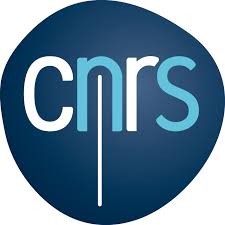


Project title: Miniaturisation: towards 1 μm frictionless microfluidic channels
Scientists in charge: Bernard DOUDIN & Thomas HERMANS
Institutions: CNRS / IPCMS and Université de Strasbourg
For a channel diameter d, the pressure drop delta p scales as d^-4, making it very difficult to pump liquids through ultra-small channels, thus limiting standard pressure-driven microfluidics to channels several tens of microns wide at least. An even greater challenge facing the adoption of nanofluidics beyond the laboratory is the lack of high-throughput, cost-effective nanofabrication techniques with reliable device-to-device reproducibility. Magnetic force densities, on the contrary, scale as d, making magneto-microfluidic concepts advantageous. Our aim here is to explore methods of miniaturizing magnetically-confined liquid-in-liquid tubes, and study their micro-hydrodynamics at ever-decreasing length-scales. We will therefore take advantage of the knowledge of magnetic force creation and control developed by other partners, interface our devices with larger-scale microfluidics input-outputs (developed by microfluidics specialists), and aiming at making proof-of-principle microfluidic device component for mixing, cargo delivery and sorting with capabilities unreachable by current microfluidic techniques.

Project title: Surface wettability and electronic structure
Scientist in charge: Michael COEY
Institution: Trinity College Dublin
The contact angles of water on boron nitride and graphite are strikingly different [1]. The former is moderately hydrophilic whereas the latter is hydrophobic. A consequence is the remarkable ability of water to flow with little pressure gradient through individual carbon nanotubes, in contradiction to the no-slip boundary condition that applies for structurally-similar boron nitride. This points to a link between hydrodynamic flow and the electronic structure of the confining material. This project will systematically investigate the origin of the effect, looking at the influence of electronic structure, surface charge, termination and roughness on surface tension and wettability. Magnetic field effects will be studied as well, both on free droplets and surfaces. Results will be applied it in the context of microfluidics without walls, working in tandem with ESR 11, and taking advantage of the experience of UPV/EHU in microfluidics, and the theoretical expertise of LU. Technology transfer to a microfluidics company is envisaged.
1 Secchi et al. (2016) Nature, 537, 210

Project title: Magneto-lithography for cell diagnostics
Scientist in charge: Lourdes Basabe-Desmonts
Institution: University of the Basque Country
The generation of well-defined moulds by magnetic-patterns will be employed to generate active surfaces with microcontact printed proteins for cell adhesion and precise sensor integration. Photopolymerisable magnetic materials will be used to generate patterns,defined by the induced magnetic field, and then photo-cured in order to generate solid patterns for master generation. These masters will be used to generate the soft moulds of PDMS for both stamp and microchannel fabrication. This novel technique will set the bases of fabrication of biomicrofluidic devices for cell arrays [1], which will be employed in different bio-applications (e.g. cell sorting, single cell analysis) and in industry.
These induced magnetic patterns will also be used to generate nanostructures on the surface of soft materials (e.g. PDMS), thereby modulating its surface roughness and so change the hydrophobicity/hydrophilicity of the surface. An interesting outcome of this investigation will be the generation of super hydrophobic surfaces within microfluidic channels for fluid control and manipulation of liquids for applications in liquid reagent storage in microfluidics.
1 Hamon et al. (2016) Adv. Funct. Mater., 26, 8053

Project title: Generation of functional ciliated surfaces and application to biofouling-resistant micro
Scientist in charge: Eberhart BODENSCHATZ
Institution: Max-Planck Institute for Dynamics and Self-Organization
In nature, many vital processes involve flows driven by cilia or flagella, from removal of pollutants in the trachea to the movement of microscopic organisms in viscous fluid environments. In this project synthetic cilia will be created to structurally cover surfaces to facilitate surface driven fluid transport. This requires coordinated, directional beating of the cilia. We plan to investigate and build two types of cilia – magnetically driven cilia and ATP driven bottom up assembled bio-based cilia. These two approaches combined with will allow to have alternative technologies for surface driven transport. We will test the system by using such flows for clearing pathogens (bacteria and mucus-like substances) out of the channel, thus preventing fouling of microfluidic devices.
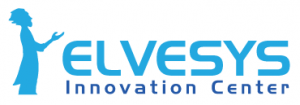
Project title: Magnetically enhanced PCR on chip
Scientist in charge: Walter MINNELLA
Institution: Elvesys Innovation Unit
The polymerase chain reaction (PCR) has rapidly established itself as the “gold standard” for microbiology assays thanks to its specificity and sensitivity. However, this reaction is still mainly performed with expensive and cumbersome benchtop systems that limit the speed of the assay due to the technical limitations of fast thermal cycling required to trigger the reaction. There are several reports that demonstrate the advantages of microfluidic PCR over standard systems [1]. Furthermore, nanoparticles have been shown to enhance microfluidic PCR performance through enhanced thermal conductivity and convective heat transfer compared to the base fluid [2]. We propose to investigate how ferrofluids (in collaboration with UNISTRA), which experience fast and localized heating when exposed to magnetic fields (magnetic hyperthermia [3]), can yield significant increases in the local heat transfer coefficient using magnetic fields and field gradients on magnetite nanoparticle-containing fluids [4]. The ESR project will be to implement this technology in a microfluidic system exploiting Elvesys’ know-how on lab on chips for fast real time quantitative PCR (qPCR), complemented by the network expertise in flow modelling (MPG).
1 Ottesen et al. (2006) Science, 314, 1464
2 Kakaç and Pramuanjaroenkij (2009) Int. J. Heat Mass Transf., 52, 3187
3 Rosensweig (2014) Ferrohydrodynamics (Mineola, New York)
4 Azizian et al. (2014) Int. J. Heat Mass Transf., 68, 94